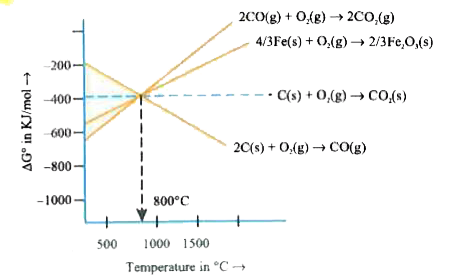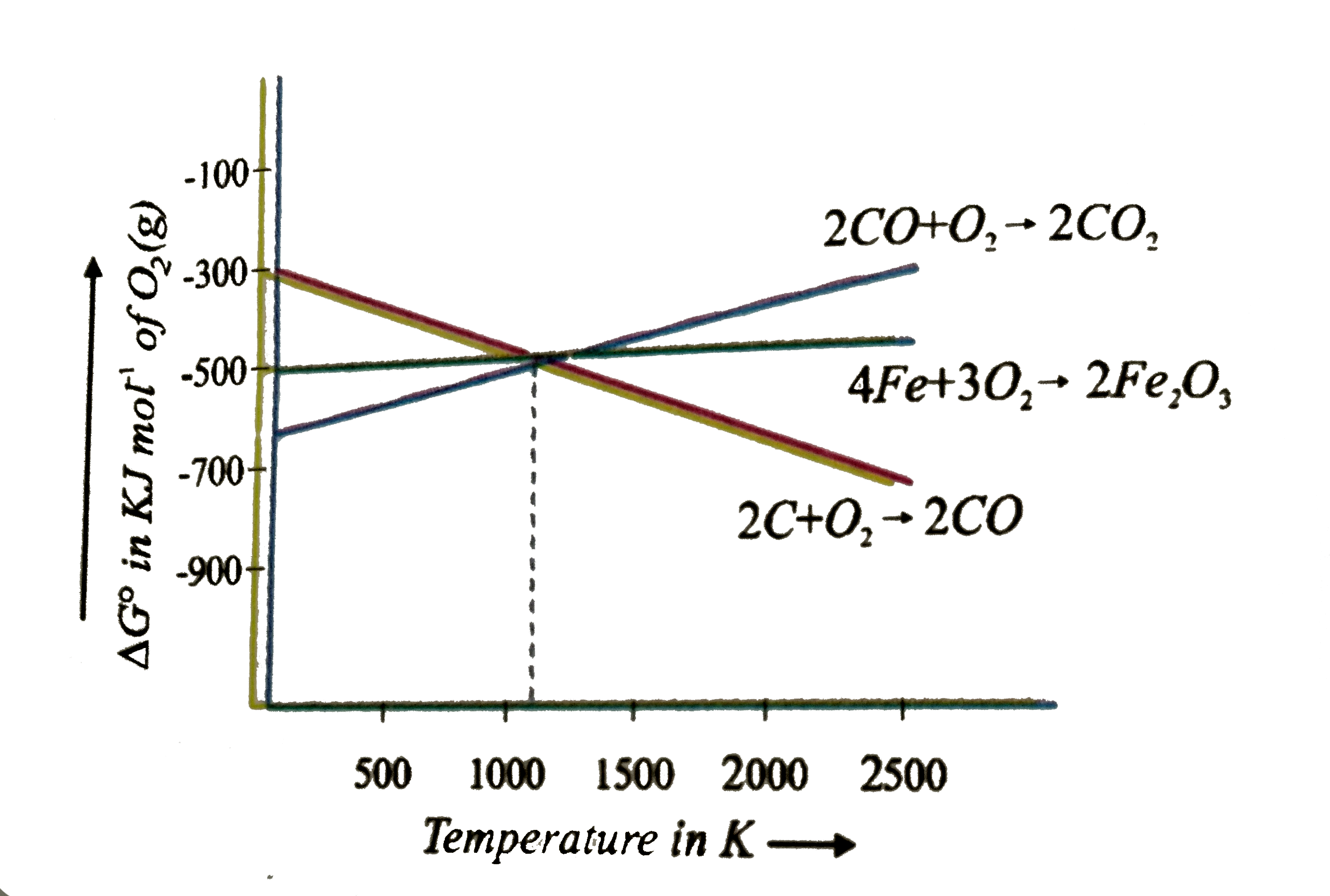Cabon cannot reduce to Fe at a temperature below 983K because.
free energy change for the formation of CO is more negative than that of
CO is thermodynamically more stable than
carbon has higher affinity towards oxygen than iron
iron has higher affinity towards oxgen than carbon
The correct Answer is:D
Iron has higher affinity towards oxygen than carbon . So, it cannot reduce to Fe at a temperature below 983K.
Topper's Solved these Questions
- GENERAL PRINCIPLES AND PROCESSES OF ISOLATION OF ELEMENTS Book:MHTCET PREVIOUS YEAR PAPERS AND PRACTICE PAPERSChapter:GENERAL PRINCIPLES AND PROCESSES OF ISOLATION OF ELEMENTS Exercise:MHT CET Corner
Explore 14 Videos
- GENERAL PRINCIPLES AND PROCESSES OF ISOLATION OF ELEMENTS Book:MHTCET PREVIOUS YEAR PAPERS AND PRACTICE PAPERSChapter:GENERAL PRINCIPLES AND PROCESSES OF ISOLATION OF ELEMENTS Exercise:MHT CET Corner
Explore 14 Videos
- ELECTROCHEMISTRYBook:MHTCET PREVIOUS YEAR PAPERS AND PRACTICE PAPERSChapter:ELECTROCHEMISTRYExercise:MHT CET CORNER
Explore 32 Videos
- HYDROGEN Book:MHTCET PREVIOUS YEAR PAPERS AND PRACTICE PAPERSChapter:HYDROGEN Exercise:EXERCISE 2
Explore 20 Videos
Similar Questions
Consider the chemical reaction given below and identify the row containing substances oxidized and reduced:
Fe2O3+3CO→2Fe+3CO2
Select the correct statements:
(I) Fe2O3 is reduced to Fe
(II) Fe is oxidized to Fe2O3
(III) CO is oxidized to CO2
(IV) CO2 is reduced to CO
View SolutionDirect reduction of Fe2O3 by Carbon is possible at temperature.
View Solution
Knowledge Check
Carbon cannot reduce Fe2O3 to Fe at a temperature below 983K because
Afree energy change for the formation of CO is more negative than that of Fe2O3BCO is thermodynamically more stable than Fe2O3Ccarbon has higher affinity towards oxygen than ironDiron has higher affinity towards oxygen than carbon.Carbon can reduce ferric oxide to iron at a temperature above 983K, because
Acarbon monoxide formed is thermodynamically less stable than ferric oxideBcarbon has a higher affinity towards oxygen than ironCfree energy change for the formation of carbon dioxide is less negative than that for ferric oxideDiron has a higher affinity towards oxygen than carbonDirect reduction of Fe2O3 by CO is possible at temperature.
Aless than 1123 KBequal to or less than 1123 KCmore than 1123 KDequal to or more than 1123 K.
Correct statements form the graph

I) Above 1073K, ΔG0 for the formation of Fe2O3 is less negative than ΔG0 for the formation of CO from carbon
II) Above 1073K, Carbon can reduce Fe2O3
III) Below 1073K, CO can reduce Fe2O3
IV) In blast furnace, reduction of Fe2O3 occurs in different temperature ranges with below 1073K by CO (or) above 1073K by carbon
View SolutionReduction of Fe2O3 with CO is done below 710∘C.
ΔfGӨ is negative at this temperature , this process is spontaneous.
View SolutionCorrect statements from the graph

I) Above 1073 K,ΔG0 for the formation of F2O3 is less negative than ΔG0 for the formation of CO from carbon
II) Above 1073K, Carbon can reduce Fe2O3
III) Below 1073K, CO can reduce Fe2O3
IV) In blast furnance, reduction of Fe2CO3 occurs in different temperature ranges with below 1073K by CO (or) above 1073 K by carbon
View SolutionFe3O4 is ferrimagnetic at room temperature but at 850K it becomes::
View SolutionAssertion : Fe3O4 is paramagnetic at room temperature and becomes ferromagnetic at 850K
Reason : The randomization of spin takes place with temperature.
View Solution

